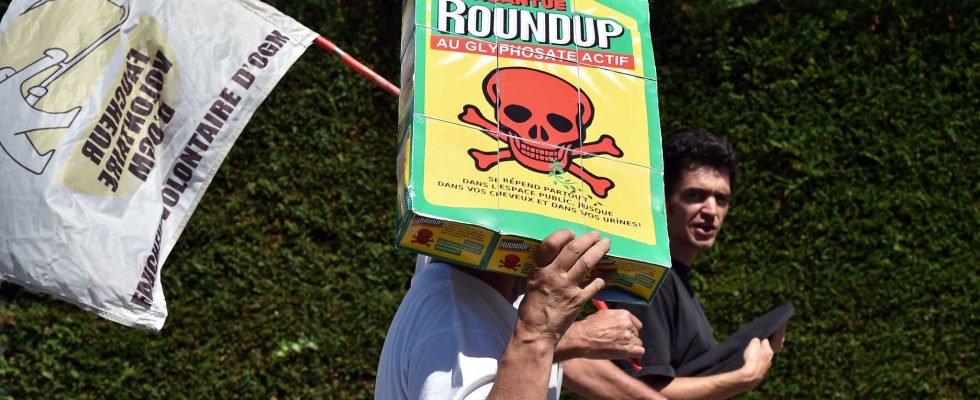It is a tool defended by environmental NGOs, but contested by the majority agricultural union FNSEA and the pesticide industry. Nodu, the indicator that France currently uses to measure the reduction in the use of pesticides, will be abandoned, Prime Minister Gabriel Attal announced this Wednesday during a press conference.
“I am announcing to you that the reference indicator for monitoring our objective of reducing phytosanitary products will no longer be the Franco-French Nodu but the European indicator. This is in line with our desire to avoid any overtransposition. demand from farmers,” said Gabriel Attal. The head of government, however, affirmed that he did not want to “give up the ambition of reducing the use of pesticides by 50% by 2030”, while the executive had announced on February 1 the suspension of the Ecophyto plan – aimed at halving pesticide use by 2030, compared to 2015-2017 – “time to put in place a new indicator”.
What does Nodu consist of?
The reference indicator of the Ecophyto plan, based on sales data, is expressed in hectares. It takes into account the quantities of active substances sold and their reference dose – or “unit dose” – specific to each substance. It evaluates “our dependence on pesticides, avoiding biases linked to large differences in approved doses between molecules”, explains the National Institute of Agricultural Research (INRAE) on its site.
Concretely, Nodu divides the quantities of active substances sold (in kg) by their reference doses (“unit dose” specific to each active substance, in kg per hectare). This technique makes it possible to have in a single indicator the sum of active substances used at very different doses, explains a recent report from the Parliamentary Commission of Inquiry into the causes of France’s inability to reduce the use of pesticides. . For researcher Corentin Barbu, contacted by AFP, Nodu is the “most relevant” indicator: “it allows us to take into account both the quantity of active substances and the dose at which they are effective, which amounts to defining their degree of toxicity.
Why is it criticized?
Nodu is accused by farmers of not reflecting the efforts already made. At the head of the cereal producers, Eric Thirouin described Nodu to AFP as a “slap machine”. According to him, “from the moment we replace an effective product, but considered harmful, with a less effective product, we are obliged to use it more often in the fields. Calculating the number of doses used is to distort the result.”
With Nodu, if you replace “a product with a risk which is very high but which is authorized” by “two or three passages of a product” less dangerous, “your indicator deteriorates” still because of the increase volume, for his part deplored Sunday the Minister of Agriculture Marc Fesneau, guest of the show Political issues on France Inter. The government also believes that Nodu does not reflect the “96% decline in ten years” of the most dangerous pesticides (CMR-1).
But, for NGOs and the Peasant Confederation, the third union force in the sector, the relegation of Nodu is a desire by the government to “change the thermometer” to camouflage “15 years of failures”. Environmental NGOs indicated on February 12 that maintaining the main indicator for measuring the use of pesticides in France was a “red line”. “To call into question the Nodu indicator is to call into question the very objective of reducing the use of pesticides”, affirmed eight environmental NGOs in a joint press release signed in particular by Générations Futures, WWF France, the Foundation for Nature and Man or the LPO.
According to François Veillerette, from Générations futures, “changing the Nodu” amounts to “changing the nature of the Ecophyto plan” to the extent that abandoning this measurement tool will no longer make it possible to coherently evaluate the pesticide reduction trajectory. Nodu “allows us to have a 15-year history and it allows us to approach the future”, adds Thomas Uthayakumar, of the Foundation for Nature and Man, contacted by AFP. “Changing the thermometer does not make sense at a time when we have been working for 15 years on reducing pesticides,” he adds.
What is this indicator replaced by?
The reference tool will therefore now be the European indicator, HRI1. This is the “harmonized risk indicator” proposed by the European Commission: it multiplies the volumes of active substances sold by “coefficients” supposed to reflect the dangerousness of the various pesticides, classified into four categories.
If the pesticide lobby welcomes the effort of this indicator to “take into account the dangerousness rather than the volume”, for Générations Futures, on the other hand, the HRI1 is “totally misleading” because “the dangerousness coefficients are too low” and because “the chosen classification has the consequence of “penalizing organic agriculture”. The NGO, which tested HR1, affirms for example that it measures “the same risk for one kilogram of nerve agent, as for “highly toxic insecticide for bees deltamethrin, than for one kilogram of quartz sand”, used organically to keep game away from crops.
On Sunday, Marc Fesneau defended the adoption of the European indicator in place of the French tool, believing that France cannot “invent” its own indicators “away from Europe”. “One day we will have European regulations on the reduction of pesticides,” said Marc Fesneau. “We are not going to invent our French indicators in isolation from the rest of Europe,” justified the minister, making the comparison with common indicators of growth, reduction of greenhouse gases, or health.
